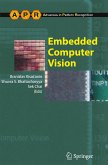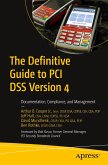This open access book. Use this practical guide to understand the concepts behind Intelligent Multi-modal Security Systems (IMSS) and how to implement security within an IMSS system to improve the robustness of the devices and of the end-to-end solution.
There are nearly half a million active IMSS cameras globally, with over 100 million added annually. These cameras are used across enterprises (companies, traffic monitoring, driver enforcement, etc.), in peoples' homes, on mobile devices (drones, on-vehicle, etc.), and are worn on the body.
IMSS systems with a camera and network video recorder for storage are becoming the normal infrastructure for capturing, storing, and transmitting video content (sometimes up to 100 streams) in a secure manner and while protecting privacy.
Military, aerospace, and government entities are also embracing digital security and surveillance. IMSS content serves as evidence in courts of law.
Security within all of these types of IMSS systems needs to be bolstered by leveraging Intel hardware and software as the last line of defense, and this book provides you with best practices and solutions for maximizing security in your system implementation.
What You Will Learn
Review the relevant technologies in a surveillance systemDefine and dissect the data pipeline with a focus on key criteria and understand the mapping of this pipeline to Intel hardware blocksOptimize the partition and future-proof it with security and manageabilityUnderstand threat modeling terminology, the assets pertinent to DSS, and emerging threats, and learn how to mitigate these threats using Intel hardware and softwareUnderstand the unique risks and threats to the intelligence in IMSS (machine learning training and inferencing, regulations, and standards) and explore the solution space for mitigations to these threatsSample applications illustrate how to design in security for several types of IMSS.-Explore ways to keep both yourself and your systems up to date in a rapidly changing technology and threat environment
Who This Book Is For
Surveillance system designers, integrators, and consultants; professional systems, hardware, and software designers who design, recommend, or integrate surveillance systems; security system integrators; video analytics engineers; agencies that write RFPs and/or RFIs; government, police, and security agencies; and corporate security divisions
This is an open access book.
There are nearly half a million active IMSS cameras globally, with over 100 million added annually. These cameras are used across enterprises (companies, traffic monitoring, driver enforcement, etc.), in peoples' homes, on mobile devices (drones, on-vehicle, etc.), and are worn on the body.
IMSS systems with a camera and network video recorder for storage are becoming the normal infrastructure for capturing, storing, and transmitting video content (sometimes up to 100 streams) in a secure manner and while protecting privacy.
Military, aerospace, and government entities are also embracing digital security and surveillance. IMSS content serves as evidence in courts of law.
Security within all of these types of IMSS systems needs to be bolstered by leveraging Intel hardware and software as the last line of defense, and this book provides you with best practices and solutions for maximizing security in your system implementation.
What You Will Learn
Review the relevant technologies in a surveillance systemDefine and dissect the data pipeline with a focus on key criteria and understand the mapping of this pipeline to Intel hardware blocksOptimize the partition and future-proof it with security and manageabilityUnderstand threat modeling terminology, the assets pertinent to DSS, and emerging threats, and learn how to mitigate these threats using Intel hardware and softwareUnderstand the unique risks and threats to the intelligence in IMSS (machine learning training and inferencing, regulations, and standards) and explore the solution space for mitigations to these threatsSample applications illustrate how to design in security for several types of IMSS.-Explore ways to keep both yourself and your systems up to date in a rapidly changing technology and threat environment
Who This Book Is For
Surveillance system designers, integrators, and consultants; professional systems, hardware, and software designers who design, recommend, or integrate surveillance systems; security system integrators; video analytics engineers; agencies that write RFPs and/or RFIs; government, police, and security agencies; and corporate security divisions
This is an open access book.








